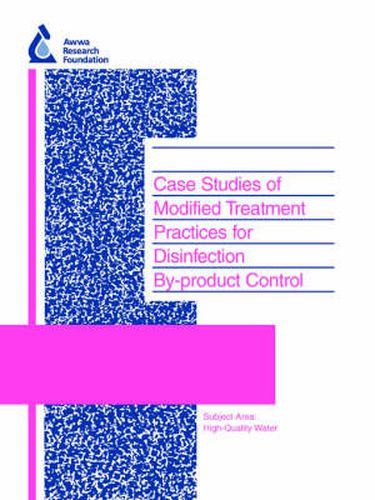Readings Newsletter
Become a Readings Member to make your shopping experience even easier.
Sign in or sign up for free!
You’re not far away from qualifying for FREE standard shipping within Australia
You’ve qualified for FREE standard shipping within Australia
The cart is loading…






Utilities must decide whether to modify their existing treatment practices to achieve compliance with the D/DBP regulations. A regulatory impact analysis predicted that up to 70 per cent of large surface-water systems would need to make some treatment modifications. Meeting multiple water-quality objectives plays an important role in the decision-making process of water utilities. Utilities must meet other regulatory requirements and secondary drinking-water standards. In addition, there are operational, financial, and engineering issues that affect the selection of treatment technologies. Because of the uncertainty of how stringent certain regulations will be and the high costs of advanced treatment technologies, many utilities have implemented treatment modifications in stages. Most utilities have made treatment modifications that have been cost-effective to meet their site-specific needs and objectives, while continuing to study or implement long-term treatment changes to meet more stringent future regulations. Utilities must factor in other regulatory requirements and secondary drinking-water standards when selecting a treatment modification for compliance with the D/DBP Rule. Some utilities chose advanced treatment processes (e.g., ozonation, membranes) that would enable them to satisfy other current and anticipated future regulations or other water quality objectives. Some systems chose ozone, in part because of its ability to destroy taste-and-odor-causing contaminants. Likewise, granular activated carbon was added to filters for taste-and-odor control. In addition, space and retrofit considerations affected technology choices. Many utilities have implemented treatment modifications in stages. To meet Stage 1 of the D/DBP Rule, most utilities have made treatment modifications that have been cost-effective to meet their site-specific needs and objectives, while continuing to study or implement long-term treatment changes to meet more stringent future regulations. The major disadvantage to staged implementation was that the treatment process was re-optimized each time treatment modifications were made. However, this problem was minimized if the full range of changes in treatment was envisioned in advance and if incremental modifications were made that were part of and consistent with long-term modifications.
$9.00 standard shipping within Australia
FREE standard shipping within Australia for orders over $100.00
Express & International shipping calculated at checkout
Utilities must decide whether to modify their existing treatment practices to achieve compliance with the D/DBP regulations. A regulatory impact analysis predicted that up to 70 per cent of large surface-water systems would need to make some treatment modifications. Meeting multiple water-quality objectives plays an important role in the decision-making process of water utilities. Utilities must meet other regulatory requirements and secondary drinking-water standards. In addition, there are operational, financial, and engineering issues that affect the selection of treatment technologies. Because of the uncertainty of how stringent certain regulations will be and the high costs of advanced treatment technologies, many utilities have implemented treatment modifications in stages. Most utilities have made treatment modifications that have been cost-effective to meet their site-specific needs and objectives, while continuing to study or implement long-term treatment changes to meet more stringent future regulations. Utilities must factor in other regulatory requirements and secondary drinking-water standards when selecting a treatment modification for compliance with the D/DBP Rule. Some utilities chose advanced treatment processes (e.g., ozonation, membranes) that would enable them to satisfy other current and anticipated future regulations or other water quality objectives. Some systems chose ozone, in part because of its ability to destroy taste-and-odor-causing contaminants. Likewise, granular activated carbon was added to filters for taste-and-odor control. In addition, space and retrofit considerations affected technology choices. Many utilities have implemented treatment modifications in stages. To meet Stage 1 of the D/DBP Rule, most utilities have made treatment modifications that have been cost-effective to meet their site-specific needs and objectives, while continuing to study or implement long-term treatment changes to meet more stringent future regulations. The major disadvantage to staged implementation was that the treatment process was re-optimized each time treatment modifications were made. However, this problem was minimized if the full range of changes in treatment was envisioned in advance and if incremental modifications were made that were part of and consistent with long-term modifications.